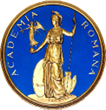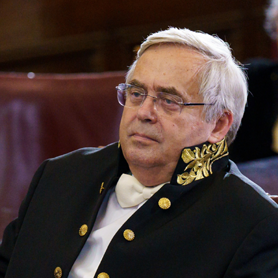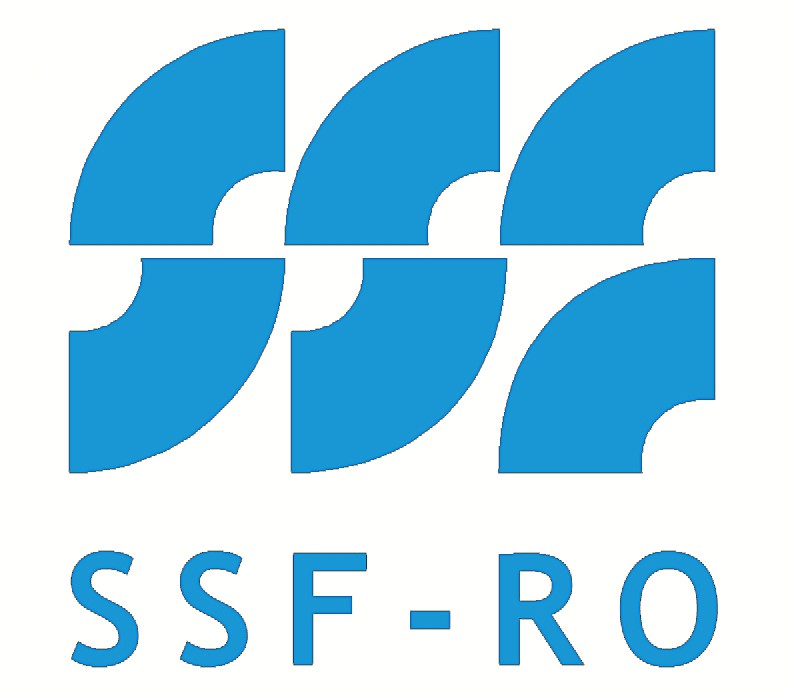
Organized by

Politehnica University Timișoara
Department of Steel Structures and Structural Mechanics
In cooperation with

Romanian Academy, Timisoara Branch
Centre for Technical, Fundamental and Advanced Research
This conference follows the successful series of CIMS conferences held in Timisoara (1992), Liege (1996), Lisbon (2000), Rome (2004), Sydney (2008), Glasgow (2012), Baltimore (2016) and Łódź (2021). It gathers leading researchers from the area of stability of metal structures and (since 2012) of composite materials structures. Particularly, problems of buckling, post-buckling and mode interaction and failure of metallic structural systems and those made of composite materials are of interest. This area of study has received a great deal of attention over the last few decades and results of research in this area have strongly contributed to the progress in the field of structural stability and to the evolution and development of engineering design codes. The nineth international conference on Coupled Instabilities in Metal Structures, CIMS 2026, will be co-organized by the Steel Structures and Structural Mechanics Department of the Politehnica University Timisoara, in co-operation with the Romanian Academy – Timisoara Branch.
TOPICS
CIMS2026 aims to provide a forum where researchers and designers join to present, discuss and disseminate the most recent theoretical, numerical and experimental advances in all areas related to thin-walled structures, including but not limited to:
COMMITTEES

CHAIRMAN
Dan Dubina, Romania

CO-CHAIRMAN
Viorel Ungureanu, Romania
SCIENTIFIC COMMITTEE
S. Adany, Hungary
I. Arrayago, Spain
J. Becque, UK
E.M. Batista, Brazil
D.V. Bompa, UK
B. Brune, Germany
D. Camotim, Portugal
E. Carrera, Italy
M. Casafont, Spain
S.L. Chan, Hong Kong, China
K.F. Chung, Hong Kong, China
D. Dubina, Romania
L. Dunai, Hungary
G. Garcea, Italy
L. Gardner, UK
F. Guarracino, Italy
G.J. Hancock, Australia
H. Hofmeyer, Netherlands
M. Jandera, Czech Republic
J. Kesti, Finland
Z. Kołakowski, Poland
M. Kotełko, Poland
T. Kubiak, Poland
A. Landesmann, Brazil
R. Landolfo, Italy
H.-T. Li, China
J. Loughlan, UK
M. Macdonald, UK
M. Mahendran, Australia
F. Mazzolani, Italy
T. Misiek, Germany
Z. Nagy, Romania
M. Nedelcu, Romania
D. Nethercot, UK
Cao Hung Pham, Australia
K. Rasmussen, Australia
B. Schafer, USA
L.S. da Silva, Portugal
N. Silvestre, Portugal
V. Ungureanu, Romania
I. Vayas, Greece
A. Wadee, UK
F. Walport, UK
B. Young, Hong Kong, China
LOCAL ORGANIZING COMMITTEE
Ioan Both
Andrei Crisan
Florea Dinu
Adrian Dogariu
Dominiq Jakab
Călin Neagu
Ioan Mărginean
Edward Petzek
Aurel Stratan
Raul Zaharia
INFORMATION
ANNOUNCEMENTS
LANGUAGE
Venue
The conference will be held at the Central Library of the Politehnica University Timișoara, Bd. Vasile Pârvan nr. 2b, 300223 Timișoara, Romania.
Papers
CALL FOR ABSTRACTS
IMPORTANT DATES
| Abstract submission: | 15 November 2025 |
|---|---|
| Abstract acceptance: | 01 December 2025 |
| Full paper submission: | 15 March 2026 |
| Peer review: | 15 April 2026 |
| Full paper acceptance: | 31 May 2026 |
| CIMS 2026: | 21st – 23rd September 2026 |
REGISTRATION
Conference programme
TRAVEL AND ACCOMMODATION
CITY OF TIMIŞOARA
The oldest settlements in Timisoara area are more than 7500 years old. The first documentary evidence of Timisoara dates from 1212, under the name of Castrum of Tymes (Timis fortress). The first stone fortress was built between 1307 and 1315 on the orders of Hungarian king, Carol Robert, Prince of Anjou. In 1552, Timisoara fortress was conquered by the Ottoman army and the whole surrounding area was transformed into an Ottoman province. On 1716, the Austrian Habsburg troops led by Prince Eugene of Savoya liberated the city which later became a free imperial city in December 1781. In 1918, in accordance with the Versailles peace treaty, the Timisoara City and Banat Province became part of Romania. In the 20th century Timisoara became a metropolis with more than 400,000 inhabitants that concentrate the economical, commercial, demographic and cultural interests of a large area, in this part of Romania. On 16 December 1989 Timisoara was the place where the anti-Communist revolution started.
TRAVEL INFORMATION
VISA INFORMATION
U/EEA/Swiss citizens do not need a visa when crossing the border to Romania, but they are required to present a valid national passport, or any document recognized by the Romanian state that certifies their identity. Citizens of non-EU/EEA countries are required at border crossing points to present a passport and a valid entry visa and an invitation (if required). Please check the list of countries whose nationals do / do not need entry visas for Romania here www.mae.ro.
ACCOMMODATION
Zet Hotel (5*)
Casa Politehnicii 2 (UPT guesthouse)
*Please note that the reservation is made via email: casapoli2@yahoo.com
More options are available on www.booking.com or www.trivago.com
Sponsors

Contact
Prof. Viorel UNGUREANU
Tel./Fax. +40 (0)256 403 932;
E-mail: cims2026@cims.ro;
Department of Steel Structures and Structural Mechanics
Faculty of Civil Engineering; Politehnica University Timișoara
1 Ioan Curea, 300224, Timișoara, Romania
Central Administration Building of the Politehnica University Timișoara